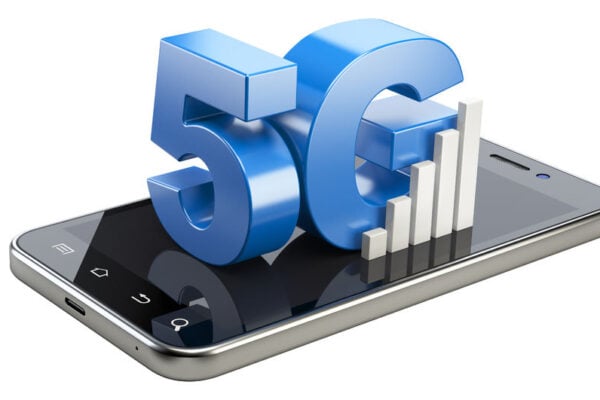
1) What are the network design issues that’ll be created by 5G networks?
“The shift from 2G to 3G was a considerable step function change for the industry. The move from 3G to 4G was a bit more drastic, and 5G will present even greater hurdles. All were dependent on new infrastructure to support the heightened data demand and use cases without any real attention to CAPEX cost.
“At a time when 4G infrastructure expansion continues to grow and 5G hardware rollout is set to drive up CAPEX even further, operators need a capacity-efficient and cost-effective way to manage the requirements of the Internet of Things, smart cities, and many other use cases 5G is set to deliver. This challenge isn’t new. But, on the cusp of 5G evolution, it does present new considerations when it comes to future network design – and this starts with the Radio Access Network (RAN).
“Legacy RAN infrastructure is inefficient as it is based on dedicated custom hardware. Until now, this lack of flexibility and scalability has led operators to make large CAPEX investments to support new technological advancements and business models. This is where RAN virtualisation (or vRAN), which takes advantage of software running on commercial off-the-shelf (COTS) hardware, and centralised RAN, which enables efficient pooling of resources, offers a lifeline and will have a key role to play in the overall success of 5G.
However, RAN virtualisation must happen in the entirety of the network, from the cloud to the core and the fronthaul network. Only an end-to-end vRAN can give operators the flexibility, efficiency, and cost savings to support the varying demands of 5G.”
See also: 5G networks key to global fibre and cable growth
2) How does the fronthaul network need to evolve for these issues to be addressed?
“To provide the different levels of throughput, bandwidth, latency, and power that various applications require, 5G disaggregates the RAN into different functional partitions and employs a flexible, service-oriented protocol stack with centralised network control. Because of this, fronthaul, or the connection between these functions in the RAN, has become a critical component in delivering the vision of 5G we’ve been promised. Simply put, the current point-to-point fronthaul network isn’t up to the challenge for next-generation networks.
“The traditional point-to-point fronthaul network with a fixed allocation of baseband and radio resources might have been tenable for 3G and 4G but it just isn’t going to cut it in a 5G world. This is where a multipoint-to-multipoint network that leverages RAN virtualisation will play a key role. This approach lets any baseband module be connected to any remote radio unit, regardless of vendor or protocol interface.
“The end goal of a multipoint-to-multipoint fronthaul network is to give mobile operators the flexibility to mix-and-match different fronthaul protocols, vendors, and technologies to create an agile and open RAN. This way, mobile operators can select matching RAN elements that best fit varying 5G applications and deployment scenarios in the most cost-effective and efficient way.”
See also: AI, neural networks and the edge of the cloud
3) What role will virtualisation and SDN play for fronthaul specifically?
“The greatest advantages of virtualisation can only be realised once the virtualisation is end-to-end; not just covering the base stations of the network but extending virtualisation across the fronthaul to include network radio resources.
“With a multipoint-to-multipoint fronthaul network that leverages virtualisation and SDN, base stations resources can be remotely configured using software and allocation can be dynamic and elastic. This means network components that traditionally reside within dedicated hardware can be easily pooled, shared and accessed, and can be routed to any destination point – which will be fundamental to the success of 5G.”
4) Can mobile operators support future 5G networks while taking advantage of their existing capital investment?
“Absolutely. Cost has always been the Achilles heel of a technology migration. 5G is yet another network. While future-proofing and modernising the network in preparation for what’s to come is important, having the ability to support legacy 2G, 3G, and 4G networks is also vital. After all, operators have invested billions into their existing infrastructure and therefore need to modernise these networks that will continue to carry the weight of traffic.
“That’s where a multipoint-to-multipoint fronthaul capable of supporting multiple fronthaul interfaces, technologies, vendors and mobile operators plays an important role. It can support legacy Common Public Radio Interface (CPRI) and new protocols such as Radio over Ethernet (RoE), eCPRI and Next Generation Fronthaul Interface (NGFI). This will not only ensure mobile operators have a 5G-ready fronthaul network, but that they can maximise their current CAPEX by combining legacy infrastructure with 5G on a common fronthaul transport network irrespective of the equipment vendor.”
See also: Inverse-design and 3D printing results in millimetre-wave metadevices
 If you enjoyed this article, you will like the following ones: don't miss them by subscribing to :
eeNews on Google News
If you enjoyed this article, you will like the following ones: don't miss them by subscribing to :
eeNews on Google News




